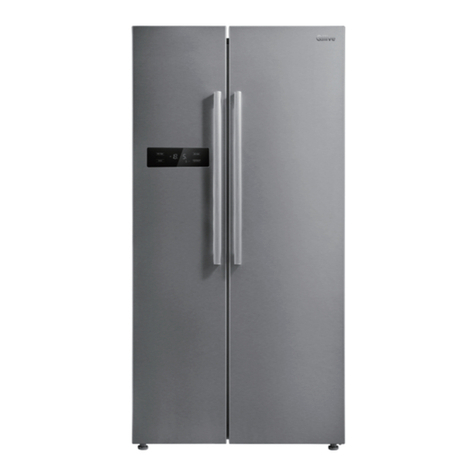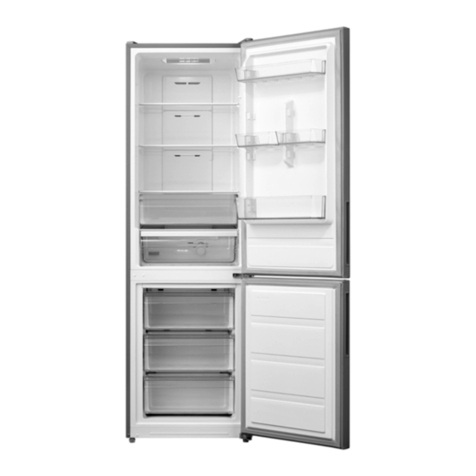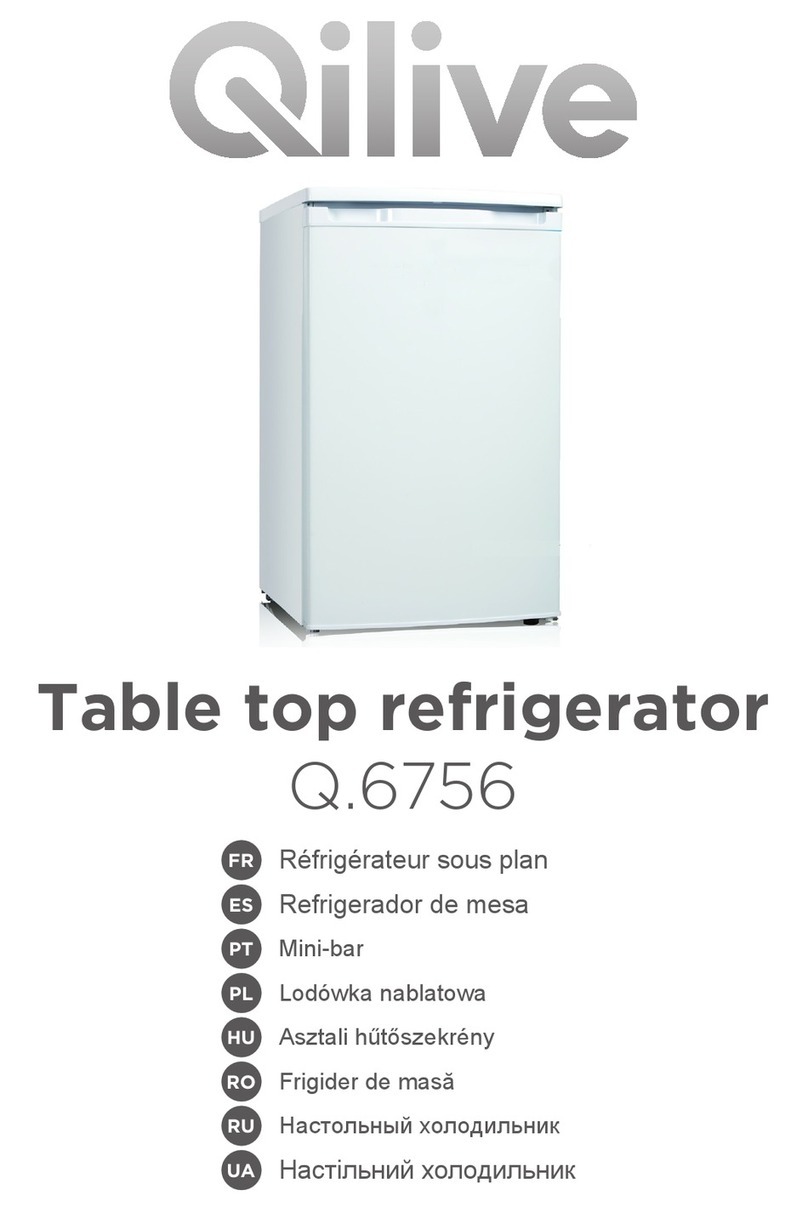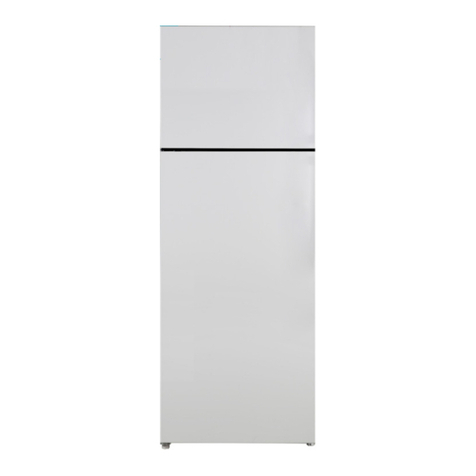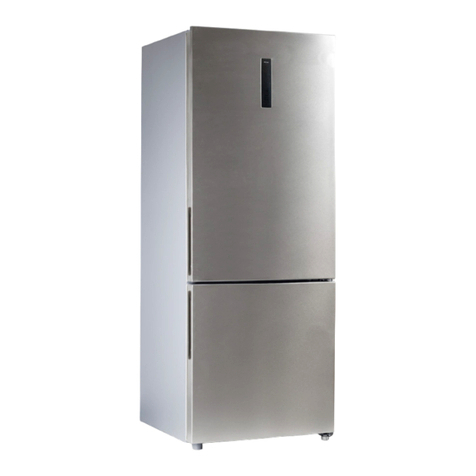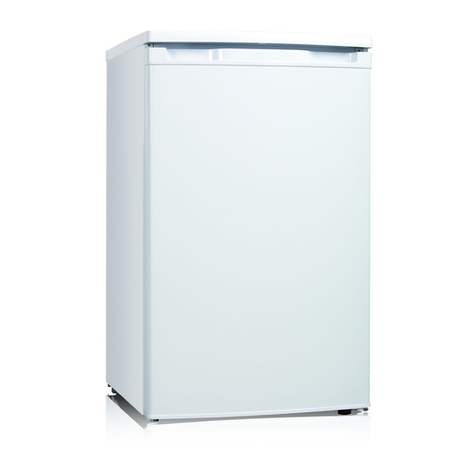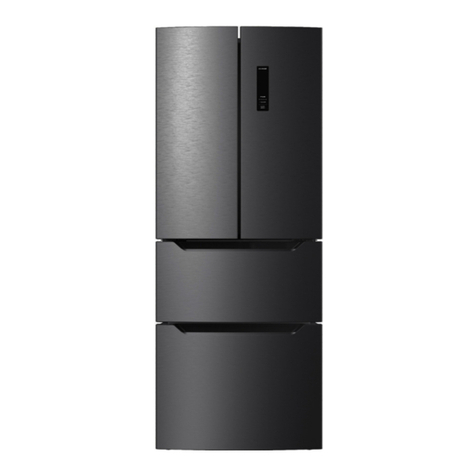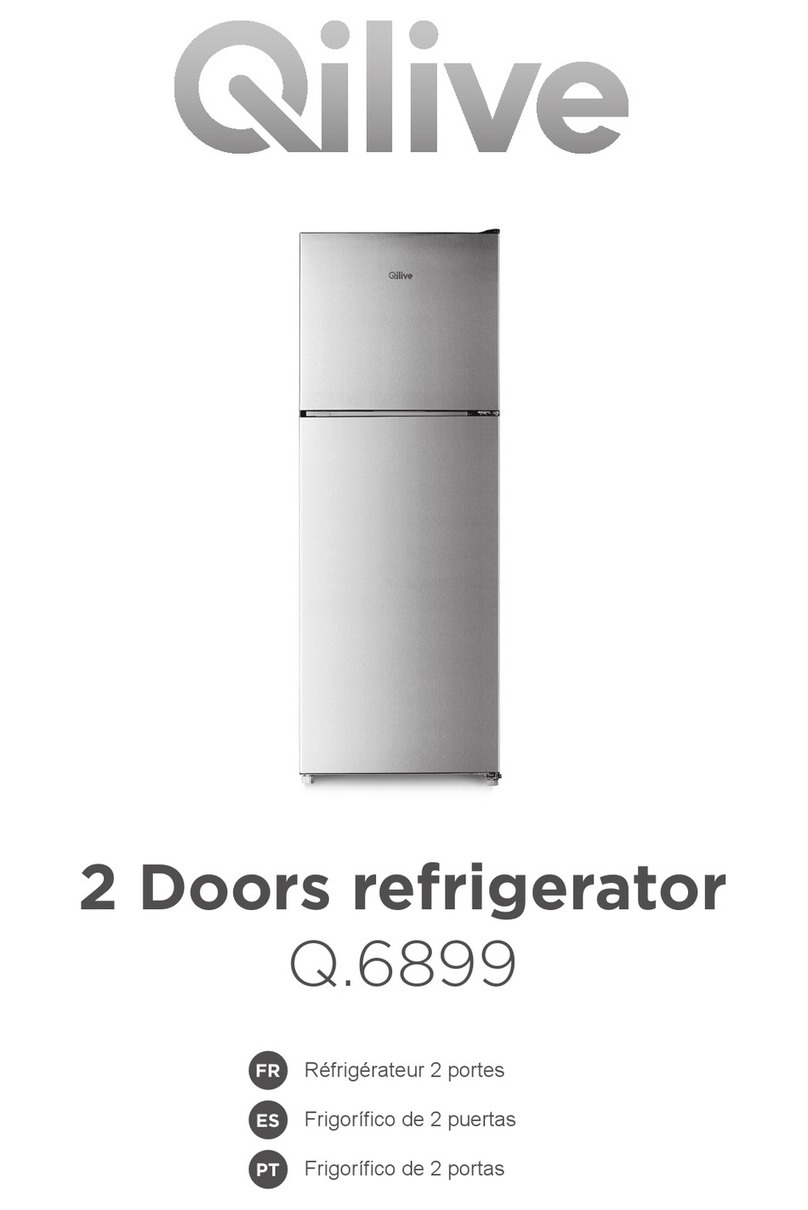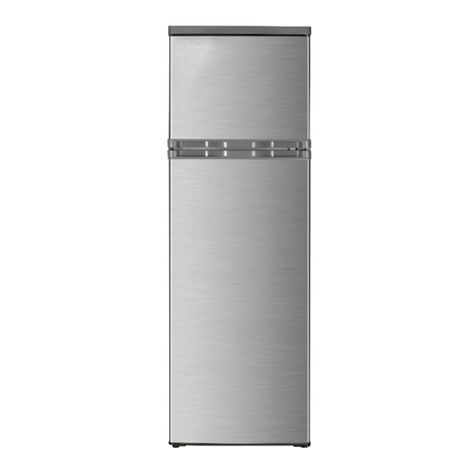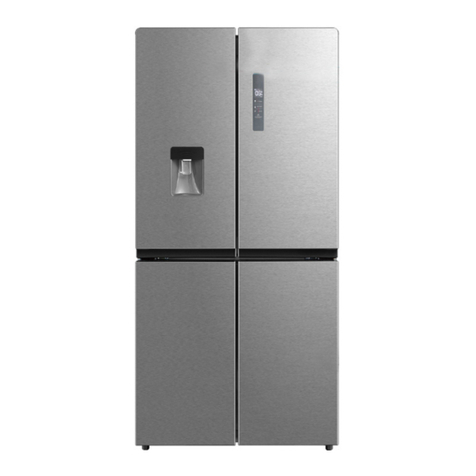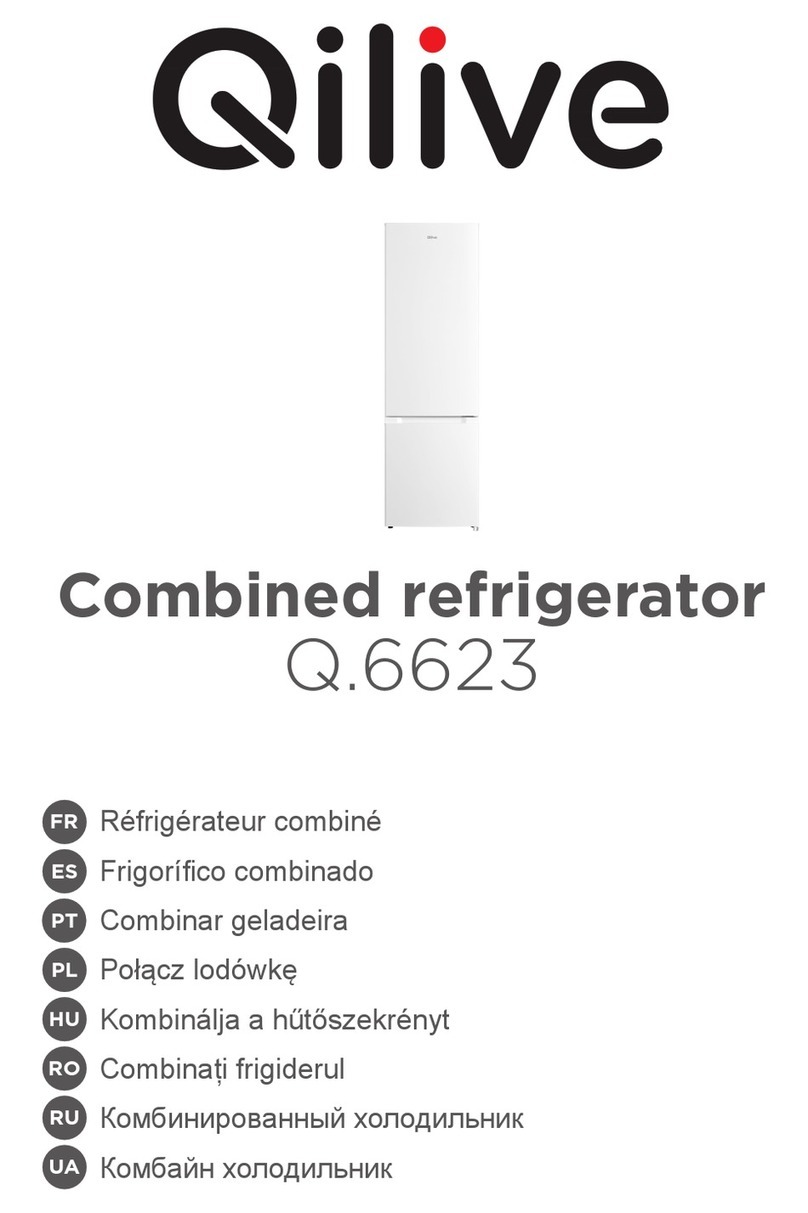
5
EN
15. DO NOT use extension cords or ungrounded (two-prong) adapters.
16. DANGER: Risk of child entrapment. Before you throw away your old refrigerator or freezer:
– Take o the doors.
– Leave the shelves in place so that children may not easily climb inside.
17. The refrigerator must be disconnected from the source of electrical supply before attempting
the installation of accessory.
18. Refrigerant and cyclopentane foaming material used for the refrigerator are ammable.
Therefore, when the refrigerator is scrapped, it shall be kept away from any re source and
be recovered by a special recovering company with corresponding qualication other than
be disposed by combustion, so as to prevent damage to the environment or any other harm.
19. For EN standard: This appliance can be used by children aged from 8 years and above
and persons with reduce physical sensory or mental capabilities or lack of experience and
knowledge if they have been given supervision or instruction concerning use of the appliance
in a safe way and understand the hazards involved. Children shall not play with the appliance.
Cleaning and user maintenance shall not be made by children without supervision. Children
aged from 3 to 8 years are allowed to load and unload refrigerating appliances.
20. The necessity that, for doors or lids tted with locks and keys, the keys be kept out of the reach
of children and not in the vicinity of the refrigerating appliance, in order to prevent children
from being locked inside.
21. To avoid contamination of food, please respect the following instructions:
– Opening the door for long periods can cause a signicant increase of the temperature in the
compartments of the appliance.
– Clean regularly surfaces that can come in contact with food and accessible drainage systems.
– Clean water tanks if they have not been used for 48 h; ush the water system connected to a
water supply if water has not been drawn for 5 days. (Note 1)
– Store raw meat and sh in suitable containers in the refrigerator, so that it is not in contact with
or drip onto other food.
– Two-star frozen-food compartments are suitable for storing pre-frozen food, storing or making
ice-cream and making ice cubes. (Note 2)
– One -, two- and three-star compartments are not suitable for the freezing of fresh food. (Note
3)
– If the refrigerating appliance is left empty for long periods, switch o, defrost, clean, dry, and
leave the door open to prevent mould developing within the appliance.
– For appliances without a 4-star compartment: this refrigerating appliance is not suitable for
freezing foodstus.(Note 4)
– Note 1,2,3,4: Please conrm whether it is applicable according to your product compartment
type.
22. For a freestanding appliance: this refrigerating appliance is not intended to be used as a built-
in appliance.
23. Any replacement or maintenance of the LED lamps is intended to be made by the manufacturer,
its service agent or similar qualied person.
24. The marking of this device (symbol of a crossed-out dustbin) complies with
European Directive 2012/19/EU relating to "used electrical and electronic
equipment". This marking means that this equipment, at the end of its useful life,
cannot be disposed of with other household waste. The user is required to deliver it
to operators who collect used electrical and electronic equipment. Collection
operators, including local collection points, shops and local authorities, create an
appropriate system for collecting equipment. Appropriate collection of used electrical and
electronic equipment helps avoid harmful impacts on human health and the environment,
resulting from the presence of hazardous components, as well as from improper storage and
treatment of this equipment.
1.1. WARNINGS FOR ENERGY
1. Refrigerating appliances might not operate consistently (possibility of defrosting of contents or
temperature becoming too warm in the frozen food compartment) when sited for an extended
